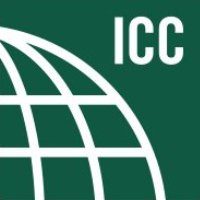
International Code Council and University of Miami Release Follow Up Study on Water Conservation
This study expanded the scope of the initial study, investigating how the same water-saving strategies could be applied to larger, multi-family buildings, including garden-style/low-rise, mid-rise and high-rise buildings.
On March 20, 2024, the International Code Council and the University of Miami released a crucial report titled Water Conservation and Codes: Leveraging Global Water-Efficient Building Standards to Avert Shortfalls. The study underscored the urgent need to adopt water conservation measures outlined in the 2021 International Water Conservation Code Provisions® (IWCCP) for residential buildings, including single-family homes and multi-family dwellings such as duplexes and townhomes.
This report built on research that analyzed the water savings potential of adopting four key water conservation strategies across four U.S. cities: Phoenix, Las Vegas, Houston and Des Moines. The focus was on the impact of these strategies within the IWCCP, which included:
- Efficient plumbing fixtures
- Rainwater harvesting, treatment, storage and reuse
- Graywater treatment, storage and reuse
- HVAC condensate catchment, treatment, storage and reuse
In Houston, for example, the total water savings from all four strategies for newly constructed homes was projected to reach 23.34 billion gallons by 2029. Other cities showed similar promise:
- Phoenix: 7.3 billion gallons
- Las Vegas: 1.7 billion gallons
- Des Moines: 1.7 billion gallons
To access this study, click here.
Expanding Conservation Efforts to Multi-Family Buildings
Following the success of this study, the University of Miami and the Code Council released a second report, Phase IIA: Water Conservation Analysis—Multi-Family Water Consumption Modeling and Water Conservation Measure Analysis, on January 20, 2025.
This study expanded the scope of the initial study, investigating how the same water-saving strategies could be applied to larger, multi-family buildings, including garden-style/low-rise, mid-rise and high-rise buildings.
Using the same framework from the first report, the research modeled the potential water savings for newly constructed buildings of different types in the same four cities.
Garden-Style/Low-Rise Buildings:
- Houston, Texas: 559.2 billion gallons
- Phoenix, Arizona: 351.9 billion gallons
- Las Vegas, Nevada: 191.3 billion gallons
- Des Moines, Iowa: 44.8 billion gallons
Mid-Rise Buildings:
- Houston, Texas: 124.8 billion gallons
- Phoenix, Arizona: 56.0 billion gallons
- Las Vegas, Nevada: 19.1 billion gallons
- Des Moines, Iowa: 8.7 billion gallons
High-Rise Buildings:
- Houston, Texas: 13.9 billion gallons
- Phoenix, Arizona: 72.0 billion gallons
- Las Vegas, Nevada: 5.5 billion gallons
- Des Moines, Iowa: 0.6 billion gallons
“The findings highlighted in this very timely and highly relevant study pave creative pathways for addressing water scarcity challenges experienced by urban communities at a global scale, while also enabling continued growth, economic development and prosperity,” said Dr. Esber Andiroglu, Director of MS-CM program with the Department of Civil, Architectural and Environmental Engineering at the University of Miami.
A Path Forward for Sustainable Water Use
This study emphasizes that a one-size-fits-all approach to water conservation is not feasible. Each city and building type require a tailored strategy for effective water use management.
As cities expand and the demand for water conservation grows, it’s important to consider local conditions and occupant sizes when implementing water conservation measures. By customizing solutions to each scenario, communities can move towards more sustainable water management practices that are better suited to the specific needs of each community.
To access the report, Phase IIA: Water Conservation Analysis Multi-Family Water Consumption Modeling and Water Conservation Measure Analysis, click here.








